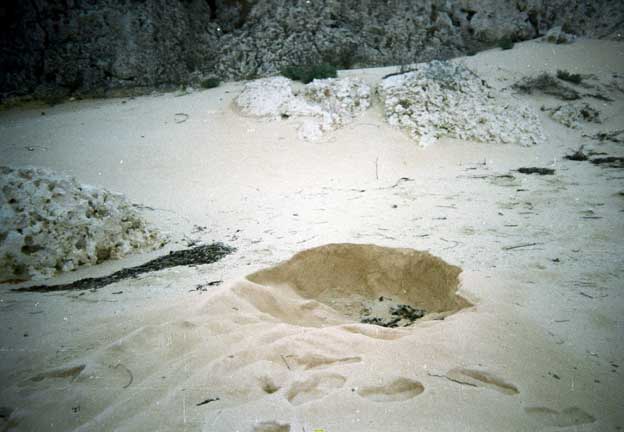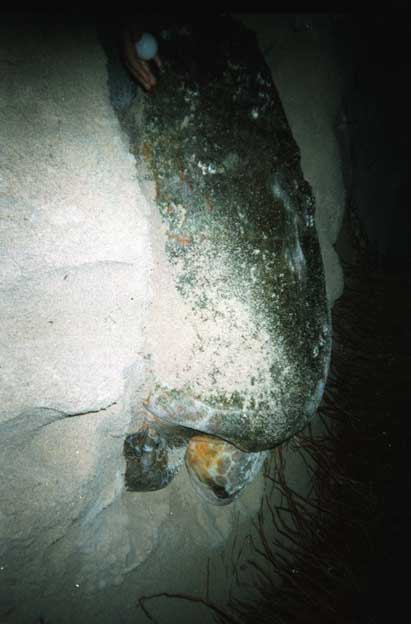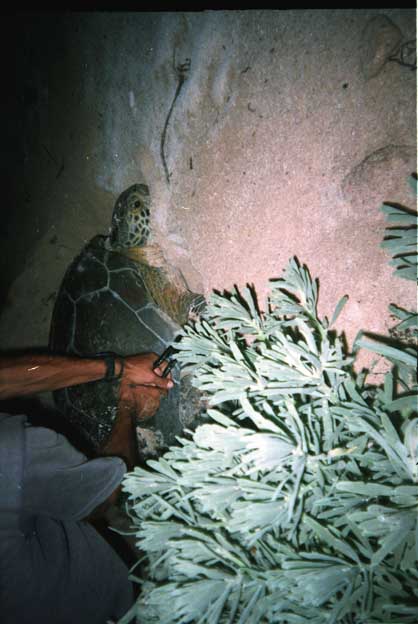Precious Freedom (Part 2)
By Irina Echarry

The first beach I visited is called La Barca (The Boat) because in its sand rests the remains of a craft that continues to deteriorate with the passing of time.
When coming to Cuba’s Guanahacabibes Peninsula, time begins to become a word frozen between the sea and sky. There’s no electric lighting, the nature reserve is quite a distance from La Bajada, the closest town. We had to save the little drinking water that we carried with us, as we did with the food we brought from the city. It was necessary to work together, to plan things out so that everything would flow smoothly and the stay would be pleasant.
Our work with the turtles was carried out at night. We would wait for them to come up onto the beach, where we would leave them alone until they begin laying their eggs. We would then count the eggs, mark the nest, write down the species, measure it and put a tag on its right flipper to be able to identify it another time. We could accomplish all that because turtles relax while depositing their eggs.

This is when we could take advantage of the opportunity to take a few pictures; prior to that, it would have been impossible, because the light from the flash would have scared the marine reptile back into the sea – without leaving its eggs.
I was fortunate; on my first night I had the luck to see tears mixed with sand in the face of a slow and sweet turtle; I was able to touch its lukewarm, jellied and semi-soft eggs. The specimen seemed to have left the water specifically to bestow us with its charm. Those who had come on previous occasions told me that turtles always return to the beach where they were born.
Despite the gnats, which were punishing, we were happy to touch the shells, and see the turtles drag themselves around looking for a place to dig their nest or to return rapidly into the sea once having finished their task.
They are a tender and mysterious animal. After 45-50 days, the hatchlings break out of their shells and – all at once – rush for the sea they’ve never seen. They go through moments of tension, since some animals feed on them when they’re tiny. Once full grown, human beings become the new predators trying to take their lives and hinder the reproduction of this marine species.

During those 15 days, I became familiar with green turtles, leatherbacks and even a hawksbill turtle. This latter species comes out in plain daylight. I saw it a week after being there. Though it was a little far, a pair of binoculars allowed me to observe it better.
The only people who can usually enter the Cape San Antonio site are a few scientists and vacationing political leaders, although sometimes their relaxation depends on the deer they shoot or the lobsters they’re able to eat, since the tranquility of the waves or the whispering of the winds is not enough for them.

This time, though, there were also a few campesinos and workers from the Roncalli Lighthouse and the radar station in nearby La Bajada. We were all serving as volunteers for the Sea Turtle Conservation Project sponsored by the Center for Marine Research.
For whoever studies a turtle and sees it spawn, it’s hard to imagine there are people who would prefer to kill them. What does a person think who takes the life of an animal for money? Do they feel superior? The few campesinos who work in the nature reserve are devoted to taking care of the forests on the coasts, along with the beaches, keeping an eye out for predators.
I admit that on that occasion I brought back a several snails to the city. Later, of those that I kept, I returned them to their rightful place. The sand, stones, sea and the stars of La Barca had missed them.






Que linda experiencia!